#toxiv_bot_new_article_summary_toot is now trending across Mastodon
#toxiv_bot_new_article_toot is now trending across Mastodon
#WWDC is now trending across Mastodon
#WWDC25 is now trending across Mastodon
#toxiv_bot_new_article_summary_toot is now trending across Mastodon
#toxiv_bot_new_article_toot is now trending across Mastodon
#WWDC is now trending across Mastodon
#WWDC25 is now trending across Mastodon
Eigenspectrum Analysis of Neural Networks without Aspect Ratio Bias
Yuanzhe Hu, Kinshuk Goel, Vlad Killiakov, Yaoqing Yang
https://arxiv.org/abs/2506.06280 https://arxiv.org/pdf/2506.06280 https://arxiv.org/html/2506.06280
arXiv:2506.06280v1 Announce Type: new
Abstract: Diagnosing deep neural networks (DNNs) through the eigenspectrum of weight matrices has been an active area of research in recent years. At a high level, eigenspectrum analysis of DNNs involves measuring the heavytailness of the empirical spectral densities (ESD) of weight matrices. It provides insight into how well a model is trained and can guide decisions on assigning better layer-wise training hyperparameters. In this paper, we address a challenge associated with such eigenspectrum methods: the impact of the aspect ratio of weight matrices on estimated heavytailness metrics. We demonstrate that matrices of varying sizes (and aspect ratios) introduce a non-negligible bias in estimating heavytailness metrics, leading to inaccurate model diagnosis and layer-wise hyperparameter assignment. To overcome this challenge, we propose FARMS (Fixed-Aspect-Ratio Matrix Subsampling), a method that normalizes the weight matrices by subsampling submatrices with a fixed aspect ratio. Instead of measuring the heavytailness of the original ESD, we measure the average ESD of these subsampled submatrices. We show that measuring the heavytailness of these submatrices with the fixed aspect ratio can effectively mitigate the aspect ratio bias. We validate our approach across various optimization techniques and application domains that involve eigenspectrum analysis of weights, including image classification in computer vision (CV) models, scientific machine learning (SciML) model training, and large language model (LLM) pruning. Our results show that despite its simplicity, FARMS uniformly improves the accuracy of eigenspectrum analysis while enabling more effective layer-wise hyperparameter assignment in these application domains. In one of the LLM pruning experiments, FARMS reduces the perplexity of the LLaMA-7B model by 17.3% when compared with the state-of-the-art method.
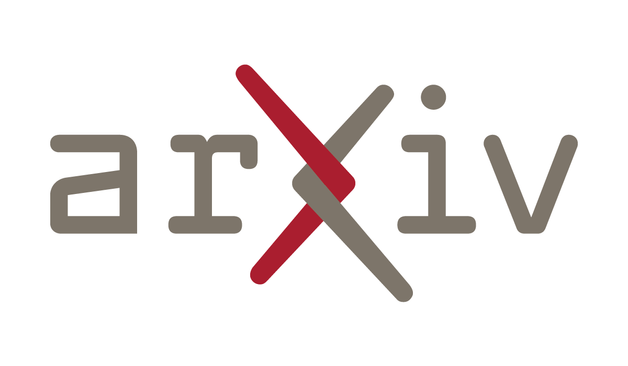
Diagnosing deep neural networks (DNNs) through the eigenspectrum of weight matrices has been an active area of research in recent years. At a high level, eigenspectrum analysis of DNNs involves measuring the heavytailness of the empirical spectral densities (ESD) of weight matrices. It provides insight into how well a model is trained and can guide decisions on assigning better layer-wise training hyperparameters. In this paper, we address a challenge associated with such eigenspectrum methods: the impact of the aspect ratio of weight matrices on estimated heavytailness metrics. We demonstrate that matrices of varying sizes (and aspect ratios) introduce a non-negligible bias in estimating heavytailness metrics, leading to inaccurate model diagnosis and layer-wise hyperparameter assignment. To overcome this challenge, we propose FARMS (Fixed-Aspect-Ratio Matrix Subsampling), a method that normalizes the weight matrices by subsampling submatrices with a fixed aspect ratio. Instead of measuring the heavytailness of the original ESD, we measure the average ESD of these subsampled submatrices. We show that measuring the heavytailness of these submatrices with the fixed aspect ratio can effectively mitigate the aspect ratio bias. We validate our approach across various optimization techniques and application domains that involve eigenspectrum analysis of weights, including image classification in computer vision (CV) models, scientific machine learning (SciML) model training, and large language model (LLM) pruning. Our results show that despite its simplicity, FARMS uniformly improves the accuracy of eigenspectrum analysis while enabling more effective layer-wise hyperparameter assignment in these application domains. In one of the LLM pruning experiments, FARMS reduces the perplexity of the LLaMA-7B model by 17.3% when compared with the state-of-the-art method.
Distillation Robustifies Unlearning
Bruce W. Lee, Addie Foote, Alex Infanger, Leni Shor, Harish Kamath, Jacob Goldman-Wetzler, Bryce Woodworth, Alex Cloud, Alexander Matt Turner
https://arxiv.org/abs/2506.06278 https://arxiv.org/pdf/2506.06278 https://arxiv.org/html/2506.06278
arXiv:2506.06278v1 Announce Type: new
Abstract: Current LLM unlearning methods are not robust: they can be reverted easily with a few steps of finetuning. This is true even for the idealized unlearning method of training to imitate an oracle model that was never exposed to unwanted information, suggesting that output-based finetuning is insufficient to achieve robust unlearning. In a similar vein, we find that training a randomly initialized student to imitate an unlearned model transfers desired behaviors while leaving undesired capabilities behind. In other words, distillation robustifies unlearning. Building on this insight, we propose Unlearn-Noise-Distill-on-Outputs (UNDO), a scalable method that distills an unlearned model into a partially noised copy of itself. UNDO introduces a tunable tradeoff between compute cost and robustness, establishing a new Pareto frontier on synthetic language and arithmetic tasks. At its strongest setting, UNDO matches the robustness of a model retrained from scratch with perfect data filtering while using only 60-80% of the compute and requiring only 0.01% of the pretraining data to be labeled. We also show that UNDO robustifies unlearning on the more realistic Weapons of Mass Destruction Proxy (WMDP) benchmark. Since distillation is widely used in practice, incorporating an unlearning step beforehand offers a convenient path to robust capability removal.
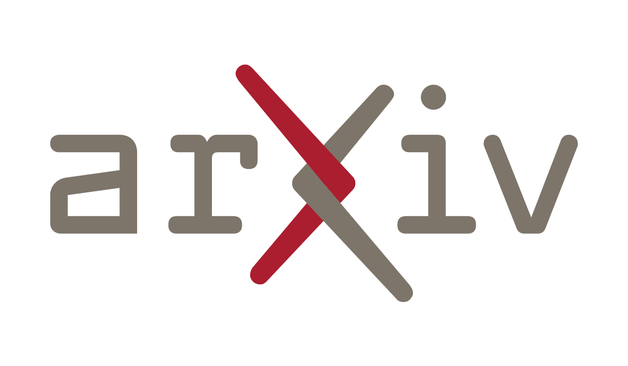
Current LLM unlearning methods are not robust: they can be reverted easily with a few steps of finetuning. This is true even for the idealized unlearning method of training to imitate an oracle model that was never exposed to unwanted information, suggesting that output-based finetuning is insufficient to achieve robust unlearning. In a similar vein, we find that training a randomly initialized student to imitate an unlearned model transfers desired behaviors while leaving undesired capabilities behind. In other words, distillation robustifies unlearning. Building on this insight, we propose Unlearn-Noise-Distill-on-Outputs (UNDO), a scalable method that distills an unlearned model into a partially noised copy of itself. UNDO introduces a tunable tradeoff between compute cost and robustness, establishing a new Pareto frontier on synthetic language and arithmetic tasks. At its strongest setting, UNDO matches the robustness of a model retrained from scratch with perfect data filtering while using only 60-80% of the compute and requiring only 0.01% of the pretraining data to be labeled. We also show that UNDO robustifies unlearning on the more realistic Weapons of Mass Destruction Proxy (WMDP) benchmark. Since distillation is widely used in practice, incorporating an unlearning step beforehand offers a convenient path to robust capability removal.
Lagrangian-based Equilibrium Propagation: generalisation to arbitrary boundary conditions & equivalence with Hamiltonian Echo Learning
Guillaume Pourcel, Debabrota Basu, Maxence Ernoult, Aditya Gilra
https://arxiv.org/abs/2506.06248 https://arxiv.org/pdf/2506.06248 https://arxiv.org/html/2506.06248
arXiv:2506.06248v1 Announce Type: new
Abstract: Equilibrium Propagation (EP) is a learning algorithm for training Energy-based Models (EBMs) on static inputs which leverages the variational description of their fixed points. Extending EP to time-varying inputs is a challenging problem, as the variational description must apply to the entire system trajectory rather than just fixed points, and careful consideration of boundary conditions becomes essential. In this work, we present Generalized Lagrangian Equilibrium Propagation (GLEP), which extends the variational formulation of EP to time-varying inputs. We demonstrate that GLEP yields different learning algorithms depending on the boundary conditions of the system, many of which are impractical for implementation. We then show that Hamiltonian Echo Learning (HEL) -- which includes the recently proposed Recurrent HEL (RHEL) and the earlier known Hamiltonian Echo Backpropagation (HEB) algorithms -- can be derived as a special case of GLEP. Notably, HEL is the only instance of GLEP we found that inherits the properties that make EP a desirable alternative to backpropagation for hardware implementations: it operates in a "forward-only" manner (i.e. using the same system for both inference and learning), it scales efficiently (requiring only two or more passes through the system regardless of model size), and enables local learning.

Equilibrium Propagation (EP) is a learning algorithm for training Energy-based Models (EBMs) on static inputs which leverages the variational description of their fixed points. Extending EP to time-varying inputs is a challenging problem, as the variational description must apply to the entire system trajectory rather than just fixed points, and careful consideration of boundary conditions becomes essential. In this work, we present Generalized Lagrangian Equilibrium Propagation (GLEP), which extends the variational formulation of EP to time-varying inputs. We demonstrate that GLEP yields different learning algorithms depending on the boundary conditions of the system, many of which are impractical for implementation. We then show that Hamiltonian Echo Learning (HEL) -- which includes the recently proposed Recurrent HEL (RHEL) and the earlier known Hamiltonian Echo Backpropagation (HEB) algorithms -- can be derived as a special case of GLEP. Notably, HEL is the only instance of GLEP we found that inherits the properties that make EP a desirable alternative to backpropagation for hardware implementations: it operates in a "forward-only" manner (i.e. using the same system for both inference and learning), it scales efficiently (requiring only two or more passes through the system regardless of model size), and enables local learning.
Neural Responses to Affective Sentences Reveal Signatures of Depression
Aditya Kommineni, Woojae Jeong, Kleanthis Avramidis, Colin McDaniel, Myzelle Hughes, Thomas McGee, Elsi Kaiser, Kristina Lerman, Idan A. Blank, Dani Byrd, Assal Habibi, B. Rael Cahn, Sudarsana Kadiri, Takfarinas Medani, Richard M. Leahy, Shrikanth Narayanan
https://arxiv.org/abs/2506.06244 https://arxiv.org/pdf/2506.06244 https://arxiv.org/html/2506.06244
arXiv:2506.06244v1 Announce Type: new
Abstract: Major Depressive Disorder (MDD) is a highly prevalent mental health condition, and a deeper understanding of its neurocognitive foundations is essential for identifying how core functions such as emotional and self-referential processing are affected. We investigate how depression alters the temporal dynamics of emotional processing by measuring neural responses to self-referential affective sentences using surface electroencephalography (EEG) in healthy and depressed individuals. Our results reveal significant group-level differences in neural activity during sentence viewing, suggesting disrupted integration of emotional and self-referential information in depression. Deep learning model trained on these responses achieves an area under the receiver operating curve (AUC) of 0.707 in distinguishing healthy from depressed participants, and 0.624 in differentiating depressed subgroups with and without suicidal ideation. Spatial ablations highlight anterior electrodes associated with semantic and affective processing as key contributors. These findings suggest stable, stimulus-driven neural signatures of depression that may inform future diagnostic tools.

Major Depressive Disorder (MDD) is a highly prevalent mental health condition, and a deeper understanding of its neurocognitive foundations is essential for identifying how core functions such as emotional and self-referential processing are affected. We investigate how depression alters the temporal dynamics of emotional processing by measuring neural responses to self-referential affective sentences using surface electroencephalography (EEG) in healthy and depressed individuals. Our results reveal significant group-level differences in neural activity during sentence viewing, suggesting disrupted integration of emotional and self-referential information in depression. Deep learning model trained on these responses achieves an area under the receiver operating curve (AUC) of 0.707 in distinguishing healthy from depressed participants, and 0.624 in differentiating depressed subgroups with and without suicidal ideation. Spatial ablations highlight anterior electrodes associated with semantic and affective processing as key contributors. These findings suggest stable, stimulus-driven neural signatures of depression that may inform future diagnostic tools.
Towards an Explainable Comparison and Alignment of Feature Embeddings
Mohammad Jalali, Bahar Dibaei Nia, Farzan Farnia
https://arxiv.org/abs/2506.06231 https://arxiv.org/pdf/2506.06231 https://arxiv.org/html/2506.06231
arXiv:2506.06231v1 Announce Type: new
Abstract: While several feature embedding models have been developed in the literature, comparisons of these embeddings have largely focused on their numerical performance in classification-related downstream applications. However, an interpretable comparison of different embeddings requires identifying and analyzing mismatches between sample groups clustered within the embedding spaces. In this work, we propose the \emph{Spectral Pairwise Embedding Comparison (SPEC)} framework to compare embeddings and identify their differences in clustering a reference dataset. Our approach examines the kernel matrices derived from two embeddings and leverages the eigendecomposition of the difference kernel matrix to detect sample clusters that are captured differently by the two embeddings. We present a scalable implementation of this kernel-based approach, with computational complexity that grows linearly with the sample size. Furthermore, we introduce an optimization problem using this framework to align two embeddings, ensuring that clusters identified in one embedding are also captured in the other model. We provide numerical results demonstrating the SPEC's application to compare and align embeddings on large-scale datasets such as ImageNet and MS-COCO. The code is available at [https://github.com/mjalali/embedding-comparison](github.com/mjalali/embedding-comparison).
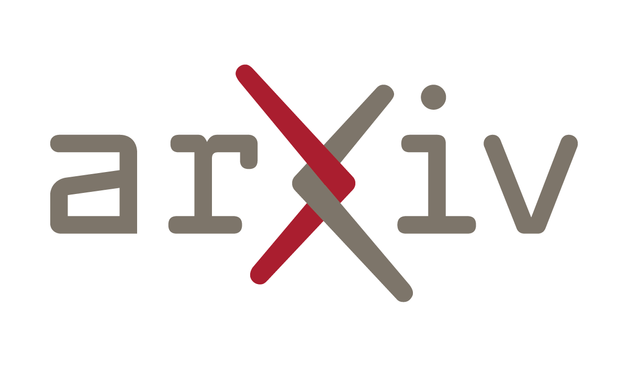
While several feature embedding models have been developed in the literature, comparisons of these embeddings have largely focused on their numerical performance in classification-related downstream applications. However, an interpretable comparison of different embeddings requires identifying and analyzing mismatches between sample groups clustered within the embedding spaces. In this work, we propose the \emph{Spectral Pairwise Embedding Comparison (SPEC)} framework to compare embeddings and identify their differences in clustering a reference dataset. Our approach examines the kernel matrices derived from two embeddings and leverages the eigendecomposition of the difference kernel matrix to detect sample clusters that are captured differently by the two embeddings. We present a scalable implementation of this kernel-based approach, with computational complexity that grows linearly with the sample size. Furthermore, we introduce an optimization problem using this framework to align two embeddings, ensuring that clusters identified in one embedding are also captured in the other model. We provide numerical results demonstrating the SPEC's application to compare and align embeddings on large-scale datasets such as ImageNet and MS-COCO. The code is available at [https://github.com/mjalali/embedding-comparison](github.com/mjalali/embedding-comparison).
Corrector Sampling in Language Models
Itai Gat, Neta Shaul, Uriel Singer, Yaron Lipman
https://arxiv.org/abs/2506.06215 https://arxiv.org/pdf/2506.06215 https://arxiv.org/html/2506.06215
arXiv:2506.06215v1 Announce Type: new
Abstract: Autoregressive language models accumulate errors due to their fixed, irrevocable left-to-right token generation. To address this, we propose a new sampling method called Resample-Previous-Tokens (RPT). RPT mitigates error accumulation by iteratively revisiting and potentially replacing tokens in a window of previously generated text. This method can be integrated into existing autoregressive models, preserving their next-token-prediction quality and speed. Fine-tuning a pretrained 8B parameter model with RPT for only 100B resulted in ~10% relative improvements on reasoning and coding benchmarks compared to the standard sampling.
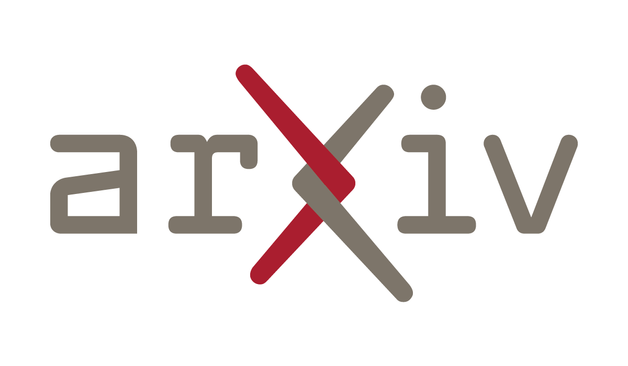
Autoregressive language models accumulate errors due to their fixed, irrevocable left-to-right token generation. To address this, we propose a new sampling method called Resample-Previous-Tokens (RPT). RPT mitigates error accumulation by iteratively revisiting and potentially replacing tokens in a window of previously generated text. This method can be integrated into existing autoregressive models, preserving their next-token-prediction quality and speed. Fine-tuning a pretrained 8B parameter model with RPT for only 100B resulted in ~10% relative improvements on reasoning and coding benchmarks compared to the standard sampling.
Model-Driven Graph Contrastive Learning
Ali Azizpour, Nicolas Zilberstein, Santiago Segarra
https://arxiv.org/abs/2506.06212 https://arxiv.org/pdf/2506.06212 https://arxiv.org/html/2506.06212
arXiv:2506.06212v1 Announce Type: new
Abstract: We propose $\textbf{MGCL}$, a model-driven graph contrastive learning (GCL) framework that leverages graphons (probabilistic generative models for graphs) to guide contrastive learning by accounting for the data's underlying generative process. GCL has emerged as a powerful self-supervised framework for learning expressive node or graph representations without relying on annotated labels, which are often scarce in real-world data. By contrasting augmented views of graph data, GCL has demonstrated strong performance across various downstream tasks, such as node and graph classification. However, existing methods typically rely on manually designed or heuristic augmentation strategies that are not tailored to the underlying data distribution and operate at the individual graph level, ignoring similarities among graphs generated from the same model. Conversely, in our proposed approach, MGCL first estimates the graphon associated with the observed data and then defines a graphon-informed augmentation process, enabling data-adaptive and principled augmentations. Additionally, for graph-level tasks, MGCL clusters the dataset and estimates a graphon per group, enabling contrastive pairs to reflect shared semantics and structure. Extensive experiments on benchmark datasets demonstrate that MGCL achieves state-of-the-art performance, highlighting the advantages of incorporating generative models into GCL.
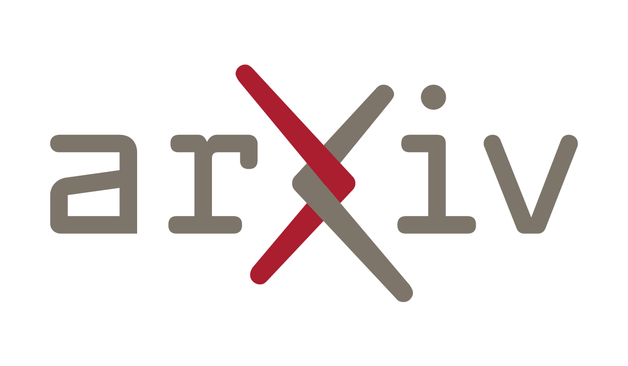
We propose $\textbf{MGCL}$, a model-driven graph contrastive learning (GCL) framework that leverages graphons (probabilistic generative models for graphs) to guide contrastive learning by accounting for the data's underlying generative process. GCL has emerged as a powerful self-supervised framework for learning expressive node or graph representations without relying on annotated labels, which are often scarce in real-world data. By contrasting augmented views of graph data, GCL has demonstrated strong performance across various downstream tasks, such as node and graph classification. However, existing methods typically rely on manually designed or heuristic augmentation strategies that are not tailored to the underlying data distribution and operate at the individual graph level, ignoring similarities among graphs generated from the same model. Conversely, in our proposed approach, MGCL first estimates the graphon associated with the observed data and then defines a graphon-informed augmentation process, enabling data-adaptive and principled augmentations. Additionally, for graph-level tasks, MGCL clusters the dataset and estimates a graphon per group, enabling contrastive pairs to reflect shared semantics and structure. Extensive experiments on benchmark datasets demonstrate that MGCL achieves state-of-the-art performance, highlighting the advantages of incorporating generative models into GCL.
How to craft a deep reinforcement learning policy for wind farm flow control
Elie Kadoche, Pascal Bianchi, Florence Carton, Philippe Ciblat, Damien Ernst
https://arxiv.org/abs/2506.06204 https://arxiv.org/pdf/2506.06204 https://arxiv.org/html/2506.06204
arXiv:2506.06204v1 Announce Type: new
Abstract: Within wind farms, wake effects between turbines can significantly reduce overall energy production. Wind farm flow control encompasses methods designed to mitigate these effects through coordinated turbine control. Wake steering, for example, consists in intentionally misaligning certain turbines with the wind to optimize airflow and increase power output. However, designing a robust wake steering controller remains challenging, and existing machine learning approaches are limited to quasi-static wind conditions or small wind farms. This work presents a new deep reinforcement learning methodology to develop a wake steering policy that overcomes these limitations. Our approach introduces a novel architecture that combines graph attention networks and multi-head self-attention blocks, alongside a novel reward function and training strategy. The resulting model computes the yaw angles of each turbine, optimizing energy production in time-varying wind conditions. An empirical study conducted on steady-state, low-fidelity simulation, shows that our model requires approximately 10 times fewer training steps than a fully connected neural network and achieves more robust performance compared to a strong optimization baseline, increasing energy production by up to 14 %. To the best of our knowledge, this is the first deep reinforcement learning-based wake steering controller to generalize effectively across any time-varying wind conditions in a low-fidelity, steady-state numerical simulation setting.
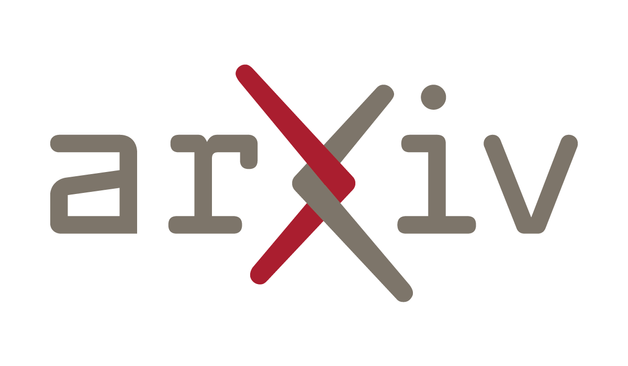
Within wind farms, wake effects between turbines can significantly reduce overall energy production. Wind farm flow control encompasses methods designed to mitigate these effects through coordinated turbine control. Wake steering, for example, consists in intentionally misaligning certain turbines with the wind to optimize airflow and increase power output. However, designing a robust wake steering controller remains challenging, and existing machine learning approaches are limited to quasi-static wind conditions or small wind farms. This work presents a new deep reinforcement learning methodology to develop a wake steering policy that overcomes these limitations. Our approach introduces a novel architecture that combines graph attention networks and multi-head self-attention blocks, alongside a novel reward function and training strategy. The resulting model computes the yaw angles of each turbine, optimizing energy production in time-varying wind conditions. An empirical study conducted on steady-state, low-fidelity simulation, shows that our model requires approximately 10 times fewer training steps than a fully connected neural network and achieves more robust performance compared to a strong optimization baseline, increasing energy production by up to 14 %. To the best of our knowledge, this is the first deep reinforcement learning-based wake steering controller to generalize effectively across any time-varying wind conditions in a low-fidelity, steady-state numerical simulation setting.
Transformative or Conservative? Conservation laws for ResNets and Transformers
Sibylle Marcotte, R\'emi Gribonval, Gabriel Peyr\'e
https://arxiv.org/abs/2506.06194 https://arxiv.org/pdf/2506.06194 https://arxiv.org/html/2506.06194
arXiv:2506.06194v1 Announce Type: new
Abstract: While conservation laws in gradient flow training dynamics are well understood for (mostly shallow) ReLU and linear networks, their study remains largely unexplored for more practical architectures. This paper bridges this gap by deriving and analyzing conservation laws for modern architectures, with a focus on convolutional ResNets and Transformer networks. For this, we first show that basic building blocks such as ReLU (or linear) shallow networks, with or without convolution, have easily expressed conservation laws, and no more than the known ones. In the case of a single attention layer, we also completely describe all conservation laws, and we show that residual blocks have the same conservation laws as the same block without a skip connection. We then introduce the notion of conservation laws that depend only on a subset of parameters (corresponding e.g. to a pair of consecutive layers, to a residual block, or to an attention layer). We demonstrate that the characterization of such laws can be reduced to the analysis of the corresponding building block in isolation. Finally, we examine how these newly discovered conservation principles, initially established in the continuous gradient flow regime, persist under discrete optimization dynamics, particularly in the context of Stochastic Gradient Descent (SGD).

While conservation laws in gradient flow training dynamics are well understood for (mostly shallow) ReLU and linear networks, their study remains largely unexplored for more practical architectures. This paper bridges this gap by deriving and analyzing conservation laws for modern architectures, with a focus on convolutional ResNets and Transformer networks. For this, we first show that basic building blocks such as ReLU (or linear) shallow networks, with or without convolution, have easily expressed conservation laws, and no more than the known ones. In the case of a single attention layer, we also completely describe all conservation laws, and we show that residual blocks have the same conservation laws as the same block without a skip connection. We then introduce the notion of conservation laws that depend only on a subset of parameters (corresponding e.g. to a pair of consecutive layers, to a residual block, or to an attention layer). We demonstrate that the characterization of such laws can be reduced to the analysis of the corresponding building block in isolation. Finally, we examine how these newly discovered conservation principles, initially established in the continuous gradient flow regime, persist under discrete optimization dynamics, particularly in the context of Stochastic Gradient Descent (SGD).